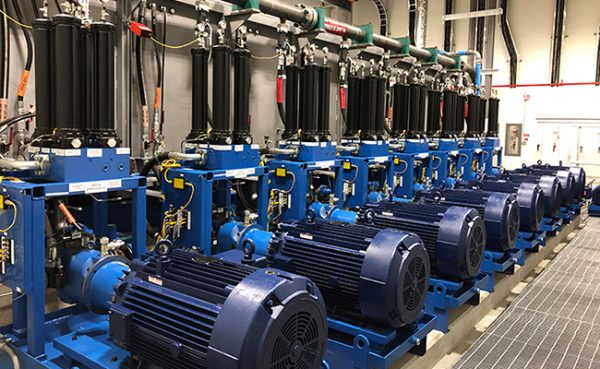Translating Lean Principles into Office Functions

By Keith Groves, Manufacturing Consultant, University of Tennessee Center for Industrial Services
The lean manufacturing movement came out of a desire to reduce waste and inefficiencies and improve productivity in the operation. Many manufacturers have also benefited from the resulting continuous improvement mindset as engaged employees became empowered to change things for the better.
Just as you assign a value to the benefit of things in the operation, you can do the same in the front office. Lean principles also apply to traditional scheduling functions, finance, even sales and marketing. Bringing lean principles to your manufacturing office will save you time, and ultimately, money, by addressing these common issues:
- Non-value-added time spent on tasks
- Delays in communication
- Lack of proper information flow
There often is a huge wall that separates office functions from manufacturing operations. Each side may not understand what the other side does and how they do it. A lean office mindset will help with transparency and breaking down that wall.
Benefits begin with standardization
The common belief has been that office work varies too much to be standardized. It is not a production line, the argument goes. Yet, it is the lack of standard office processes that often results in inconsistent information quality, which often requires extended time to address and correct. Applying lean principles to an office will:
- Improve processing time and handoffs through reduction of steps and processes. You might be surprised by how many unnecessary tasks or touch points exist in a typical office based on “how we do things.”
- Provide greater control of information flow. It’s easier to tweak a systematic approach than a casual process.
- Lead to better and more responsive problem solving. Issues will emerge more quickly and be easier to identify.
What does a lean office look like?
Every office function produces something – the procurement department employees produce purchase orders; some areas produce an approval or a report. Let’s look at some examples of how lean concepts can help reduce variability in office functions.
- Purchase orders. Let’s say your shop operates on a 30-day lead time from receiving an order to delivery. Are there set parameters for breaking down that lead time? Does it align with who needs the most time to fulfill the order? How soon are all stakeholders even made aware of the order?
- Scheduling. If a work schedule never holds up and someone downstream is frequently adjusting it, chances are the creation of the schedule is not a value-add process. The process may even create more work. Apply lean principles as you would to solve an operational bottleneck or an inventory issue.
- Batch processing. This also applies to periodic or unpredictable processing of documents. This often is done for the convenience of one staff member who may not realize that they are batching and certainly is not aware of the negative impact it has on downstream processes.
- Data collection. Do you have set processes for the data? Many manufacturers have gaps in communications or wait until the end of the month or a set period before looking at the data. And that may be OK, but if this information is going to impact the supply chain, people need to know, and know promptly.
Many manufacturers understand the importance of how sales projections impact supplies, production staffing and delivery times. What other information should be treated with the same discipline?
How to get started with a lean mindset
Implementing lean in an office setting includes mapping the processes and applying the 5S principles. There often are shared attributes in the information processed in manufacturing offices (multiple departments rely on the information), so there may not be the need to do value stream mapping as you would for a production line.
Breaking down an office task includes identifying:
- Mapping. How does the task get done? Who does what as it moves through the organization?
- Value-add vs. non-value-add. With each touch point, what value is being added to the organization? Are there redundancies? Is all the information being used or can you eliminate touch points?
- Measurables. This could simply be the number of handoffs and touch points. Even if every touch point adds value, you still may be able to consolidate them.
Mapping the office functions may be done with a simple flow chart (who does what in a sequence), but it often is better to use swimlane mapping. Think of a swimming pool with lanes being different departments or people in the office. You can easily map who does what as the document moves toward its finish line. Swimlane mapping often reveals inefficiencies and unneeded touch points, which are easily seen if your map reveals the document itself frequently changes lanes as it moves through the office. Your process may be overly complex.
And it wouldn’t be “lean” if we did not apply the 5S principles to the office:
- Sort: Separate the necessary from the unnecessary
- Simplify: Do away with everything that makes the work process complicated
- Shine: Clean and inspect the office area regularly
- Standardize: Establish strict guidelines for how the work is done and organized
- Sustain: Keep the office productivity on a certain level, and come up with new ways for improvement
Employee involvement is key
As is the case on the operational side, the key to a successful lean office is the work culture. The must-have list begins with having the right people in the room and buy-in from leadership. Keys to a lean office are:
- Strong leadership that believes in the philosophy
- Constant internal messaging
- Making it part of the office’s DNA (how you do things)
- Training
- Showcasing the results and benefits achieved
One of the great ironies of office communications is that workplaces with fewer people often are among the least effective in communicating with each other. Few small manufacturers practice lean principles in their offices.
No matter the size of the manufacturing office, you must create trust, so people are empowered to solve problems and not be afraid to make mistakes. A local Manufacturing Extension Partnership Program center can help implement a lean/continuous improvement approach in your office.
For more information, visit www.nist.gov/mep/centers.







